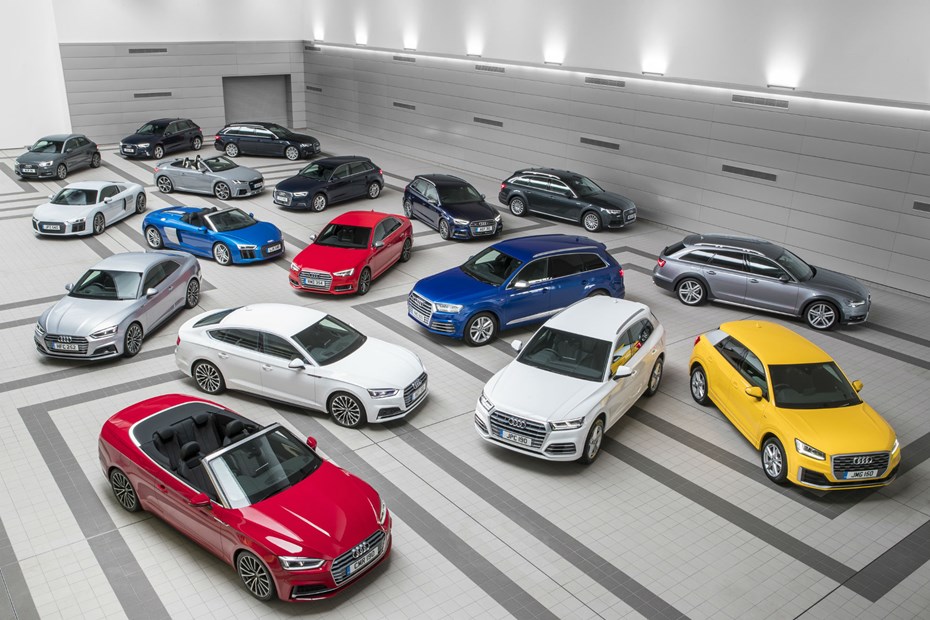Platform sharing occurs when manufacturers base a number of different models on the same framework.
Whether models are based on a separate chassis like a pickup truck, or share smaller components, platform sharing happens widely across the car industry, improving the quality and ability of the cars you can buy today.
The Volkswagen Group, for instance, which includes VW, Audi, SEAT and Skoda marques, shares platforms, engines, gearboxes and other technology across models – with visually different cars such as the VW Golf and Skoda Octavia having much of the same DNA beneath the skin.
Many recent VW Group cars use what’s known as the MQB platform, around which much shared technology is attached.
Platform sharing brands – some surprising partners
Platform sharing generally occurs between different manufacturers and very different looking cars, rather than ‘badge engineering’ where the separate models are unaltered beyond minor trim and badge differences. Shared platforms can be remarkably diverse, with the essential componentry underneath the car appearing under very different vehicles.
Currently platform sharing partners include BMW and Toyota, who are jointly developing new sports cars on the same underpinnings. Renault-Nissan and Mercedes-Benz share technologies and front-wheel drive platforms alongside the internal sharing that happens between Renault and Nissan.
Other cars on shared platforms include the Ford Focus and Range Rover Evoque (with engineering changes to suit off-road use), the Alfa Romeo Mito and Vauxhall Adam, and the 2008-2016 Ford Ka and Fiat 500. Such technology and manufacturing agreements are commonplace, and it is unusual for a car to exist which doesn’t owe some shared technology to a predecessor or apparently competing vehicle.
Modular or Scaleable Architecture – MQB and similar systems
This shared architecture – which is often modular for easy slotting across models – does not, however, mean you can take your car apart and change it for different conditions. Rather, it’s part of the design process; where once each new car would require new, bespoke suspension, interior, electrical and other items to fit the body design, now designs are based on fixed platform elements that cannot be changed.
Known as ‘hard points’, these fixed points allow safety and handling to be consistent using proven parts, while providing freedom for the designers to shape the car around this architecture. In the case of Volkswagen’s MQB plaform, the essential suspension and powertrain design has been used to create cars as diverse as the 4m long Polo hatchback, to the more than 5m long Volkswagen Atlas SUV, sold in America.
A similar format has been used for other VW Group models, known as MLB, and found under the majority of Audis as well as Volkswagen and Porsche SUV models.
Despite sharing common elements, a great deal of personalisation in technology, steering feel, suspension and design occurs around the platform – be in a relatively straightforward increase in wheelbase or height, or the diversity of a large SUV and a small roadster. Not having to design a new engine mounting for every model, a new electronic network or developing and perfecting a footwell and pedal location, is a simple way for manufacturers to cut costs.
It also ensures that decades of research into comfort, refinement and safety can be applied to a new model, with no nasty surprises for the consumer or the manufacturer when venturing into uncharted territory.
Marketing, or technology – are modular platforms truly new?
Although some manufacturers are openly promoting their modular architectures, there’s little relevance to the consumer. You can’t, yet, absolutely specify your car from bodystyle, powertrain and trim; a VW Polo with a Golf engine and Audi interior might sound appealing, but it’s unlikely to happen.
What is new is the willingness to disclose how the engineering is not, actually, bespoke to every new car. It’s naturally compelling to present each new generation of car as a revolution, yet significant investment in technology often takes more than one generation of car to be repaid.
How to choose a shared platform car
Badge engineering is relatively common in the commercial vehicle sector, where vehicles like the Fiat Fullback and Mitsubishi L200 share all major bodywork and mechanical parts. Fiat/Abarth’s 124 and Mazda’s MX-5 may seem to have only cosmetic differences around their shared bodyshell, but the engine and suspension changes for the Fiat duo give them a completely different identity.
There can be good reasons to choose one badge-engineered vehicle over another, and not just how you see that brand; you may have a dealer nearer to you, or different warranty terms, finance packages or promotions.
Where the platform is shared, such as the Alfa Mito and Vauxhall Adam, there can be significant differences in style, equipment, comfort and engine choice as well as the convenience and financial elements. Although both cars compete for sales and offer the same internal space to buyers, you may find that the image of one car better fits with your own personality. After all, if we only chose cars based on utility, the market would be a much smaller and less exciting place.
Just so you know, we may receive a commission or other compensation from the links on this website - read why you should trust us.




